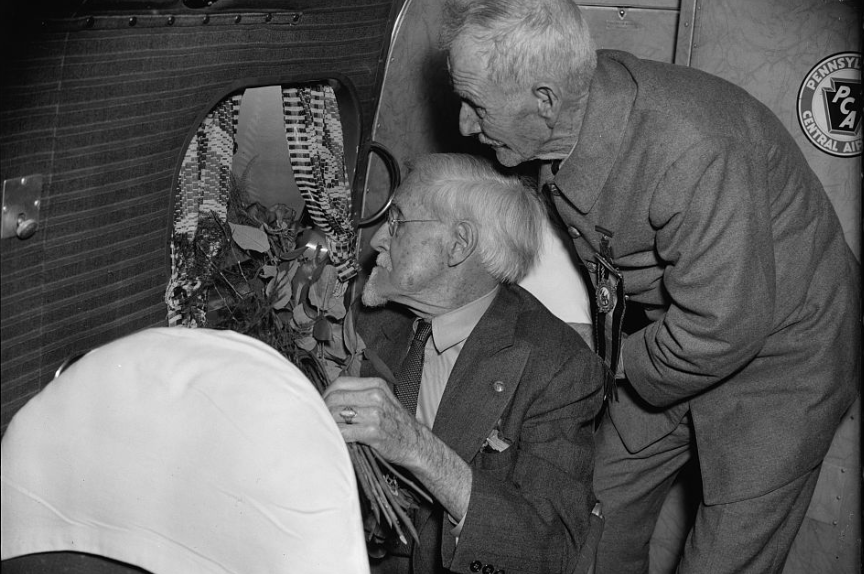
January 2011
Oriana Weems, Alma Lamour, Caroline Fitzhugh, Seth Rawbon, Netley Shiplake, Mordaunt—none of these improbable names is likely to mean anything to the modern reader, but to the generation that lived through the Civil War, and sighed and wept over the novels that it spawned, the names were as familiar as Scarlett O’Hara is to us. For these are some of the heroes and heroines of a genre of Civil War romance that flooded the market almost as soon as the shooting started.
To begin with, the Presidential libraries do not look like what they are. Each one is, in fact, a miniature Office of Public Records. And scholars who frequent such offices know that they are found in capital cities, in buildings that are heavy, ornamented, slowly discoloring monuments to bureaucrats dead and gone. The National Archives of the United States—America’s public records—are, to give one example, housed in an oversized Greek temple near the intersection of Constitution and Pennsylvania avenues in Washington, D.C.
The wonderfully evocative photograph spread across the two preceding pages has a great deal to say, in the way that pictures do, about America, its heritage, and the importance of historic preservation. And besides all that, it is a good point to begin what starts out as a very unhappy story.
The Pacific Ocean is vast and lonely. In the second decade of the nineteenth century, when the American whaling industry was expanding rapidly in that great sea and American merchant ships plied the lucrative China trade, they ventured in an area where no nation’s law extended. The United States naval force in the Pacific totalled at most three vessels, all well occupied in protecting American interests on the coasts of Peru and Chile in the midst of Bolivar’s revolution.
This situation was an invitation to the strong and ruthless. Whalers and traders commonly lost men by desertion at the islands and had to recruit their crews from men who had deserted from other ships. Deeds of violence were not uncommon, but the worst to date was the bloody mutiny aboard the American whaleship Globe .
The lake was liberated from glacial ice ten thousand years before Babylon was built. Thus, it had more than fifteen thousand years in which to transform from an almost sterile, ice-gouged river valley into fecund, prosperous Lake Erie.
In fifteen millennia the lake received more than ninety species of fish and immense and varied populations of insects, worms, and crustaceans, and built up the largest concentrations of freshwater fish in the world.
In 1920 William T. Waggoner of Fort Worth, Texas, possessed a string of racehorses, hundreds of thousands of acres of prime cattle land dotted with oil wells, and the firm conviction, apparently born of experience, that everything has a price. That year a lustrous chestnut colt was running away from the nation’s best three-year-olds with ridiculous ease, and it occurred to Waggoner that this colt was the greatest thoroughbred that he or any other American horseman had ever seen or was ever likely to see. Waggoner wanted him in the worst way, and he offered $500,000 to the colt’s owner, Samuel D. Riddle, of Glen Riddle, Pennsylvania.
Riddle had paid $5,000 for the colt at the Saratoga Yearling Sales and had long since reached the same conclusion about him. Riddle rejected the Texan’s offer.
Waggoner must have been prepared for the initial rebuff. A textile manufacturer, Riddle was, after all, a wealthy man too. But Riddle was a Scot, a near man with a dollar. Playing upon this weakness, Waggoner raised his offer to $1,000,000. Again, Riddle turned him down.
Few of our thirty-seven Presidents have been highly gifted with literary talent; of those few, fewer had the time or the patience to sit down and deliberately write books. Theodore Roosevelt, who was among the most gifted, also crammed into his “strenuous” life more nonliterary activity than perhaps any other President. Yet somehow, in a career of nearly forty years, he managed to produce more than twenty published books—histories, biographies, collections of essays, accounts of hunting expeditions, an autobiography. As on every other topic, Roosevelt had very definite ideas about writing, especially the writing of history. In the midst of a busy day at the White House in January, 1904, he took a few minutes to dictate a letter to British historian Sir George Trevelyan that included this passage:∗ From The Letters of Theodore Roosevelt , Vol. 3, Elting E. Morison, ed., Harvard University Press, 1951
